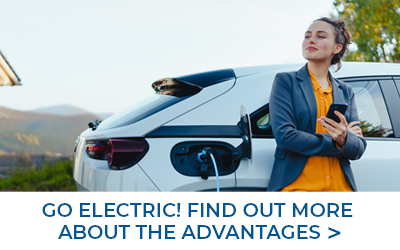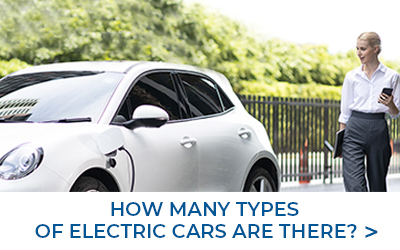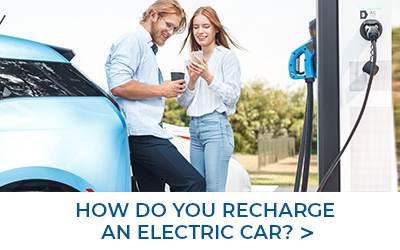The most frequently asked questions about electric car
Let us explain what sustainable travel means
- How long does it take to charge an electric car?
Charging times depend on both the battery capacity and the power source. Direct current (DC) charging is the quickest but is not possible with every vehicle or charging station. Charging with alternating current (AC) is more common. Depending on the charging power, as an example, charging a Renault ZOE can take between 2.5 hours (22 kw) and 4.5 hours (11 kw).
- What’s the difference in charging time at a residence, at a standard charger and at a supercharger?
Charging at home over a 3-pin plug is the slowest method of charging an electric vehicle and could take up to 24 hours.
Using a 7kW wallbox home charging unit will enable a car to be fully charged overnight.
Using a ‘rapid’ charger at a public charging station offering speeds of between 50kW to 350kW, an electric Vauxhall Corsa can be charged up to 80% in just 30min (Source: The AA).
- How far can I get with an electric car?
The range of an electric vehicle depends on various factors including driving style, use of heating/air conditioning, topography, and climatic conditions. However, electric vehicles in the Avis electric fleet can all cover 150 to 180 miles [250 to 300 kilometres] with ease.
- Can I charge my electric hire car at home?
Unless you have a home charging station, charging an electric car via a standard household socket is possible in principle, but not recommended. As well as being slow, prolonged charging via a domestic socket in this way can lead to overheating.
- What happens if I break down or run out of battery when I am renting a Maggiore electric vehicle?
If you have a breakdown during your Maggiore electric vehicle rental, you can contact our breakdown hotline as usual. Our roadside assistance service specialises in assisting with electric vehicles. If a vehicle exchange is necessary in the event of a breakdown, you will receive a replacement vehicle.
- Can I charge my electric car at any public charging station?
To use public charging stations, you will usually need to download an app or have a payment card for the charging station provider to make payment. Unfortunately, it is currently not yet possible to use a payment card for a specific provider at every charging point. You will also need to check that a charging station offers the right connector type for your car.
Our tip to make charging simple and easy:
Before renting, download a route planner app to give you an electric vehicle charging map journey and destination.
With Enel X Way app, you can see the charging station map, station type, access schedule, costs, and you can reserve a connector. Check for the charge point provider with the densest charging network in the area you will be travelling.
Don’t forget that some locations like motorway services, hotels and supermarkets offer free charging points.
- How long does it take to register with a charging station network provider?
Most EV charge point providers have an app to download free of charge. Once you have registered within the app and input your payment card details, you’ll be navigated directly to the nearest charging station. The payment process then takes place directly via the app. Some EV charge point providers offer a charge card which will take a just few days to arrive once you have registered.
- What is the difference between driving an electric vehicle and petrol or diesel car?
There are some aspects to be aware of when driving an electric car when you are moving from a petrol or diesel car that may surprise you, but you will quickly become used to.
As soon as you release the brake pedal, the vehicle starts rolling.
When parking the vehicle, make sure that the start-stop button has been pressed. This is the only way to automatically activate the handbrake.
The battery is often installed underneath the vehicle. Therefore, be careful to avoid damage to the underside of the car.
Pay particular attention to your surroundings when driving. Electric vehicles are quieter than petrol and diesel engines and harder to hear for other road users, pedestrians, cyclists, and horse riders.
- How do I deal with charging cables on a home charge unit?
If you buy a home charging unit, you will have to decide whether to opt for tethered cables which are attached to the unit or untethered which are detachable and can be stored away. If you opt for a unit with cabling which is integrated, you will have to uncoil this each time you use it. Detachable cables can make the unit look neater and can be kept separately.
- What is the sequence for charging an electric vehicle?
- Start with the vehicle switched off
- Then insert the plug into the charging unit
- Lock the car - this won’t prevent charging, but which will also lock the cable in place
- First connect your charging cable to the vehicle
- A steady blue light means the vehicle is charging
- When the vehicle has finished charging, disconnect the cable from the charging unit and remove the cable from your car.
- Can you charge an EV when it's raining?
Yes, it is safe to charge your electric vehicle in the rain as the charging systems are built to withstand water. Electric cables and car chargers are weatherproof.
- Does the weather temperature affect charging speeds?
Weather conditions may affect the charging speed. In colder weather, the battery may have to warm up before it is able to charge at optimum speed.
- Can my electric vehicle cables be stolen during charging?
Charging an electric vehicle at a public charge point should be not present a risk. At home, the cable should be locked into the vehicle charge socket to make it harder to remove.
- Can someone steel my electricity by charging their car while I am away?
All home electric vehicle charging units have security features to prevent anyone steeling your electricity to charge their own car. These include the ability to set the time at which charging takes place – the thief would have to know when this was timed to go on and off and electronic locking for added peace of mind.
- At which battery level is it best to charge a car?
Electric vehicle batteries charge at optimum speed at a state of charge (SoS) of between 20-80%. This is connected to the car’s in-built protection of the battery. Charging speed slows down when the vehicle reaches 80% charged or falls below 20% charged.



